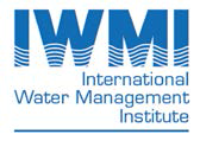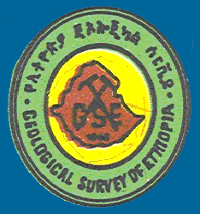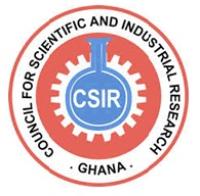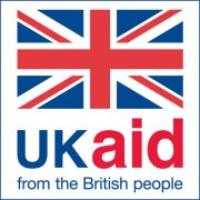Ghana
1. Location
The Upper East Region (UER) is located in the north-eastern corner of Ghana and is bordered to the north by Burkina Faso, the east by the Republic of Togo, to the west by Sissala in Upper West Region and to the south by West Mamprusi in Northern Region. The total land area is about 8,842 km2, which represents 3.7 % of the total land area of Ghana.
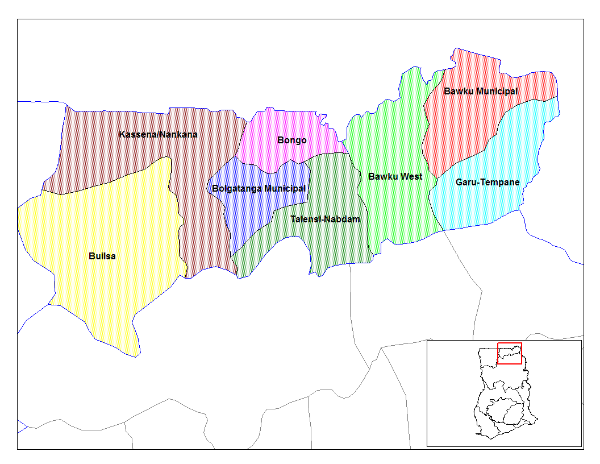
Figure 1: Map of the Upper East Region, Ghana
2. Climate
The UER falls in the semi-arid climatic region also referred to as the Tropical Continental climatic region. The climate is influenced by the movement of the Inter-Tropical Convergence Zone (ITCZ). The rainfall season typically occurs between May and October followed by six months of prolonged dry season from October to April. During the dry season, the ITCZ moves towards the coast of West Africa which induces the blowing of dry, dust laden North-East Trade Winds from North Africa towards the region and the entire Africa.
The mean annual rainfall in the region ranges from 800 mm to about 1250 mm. The temporal and spatial rainfall in the region is highly variable. Temperature on the other hand varies only slightly in the UER. It ranges from about 15oC between December and February to about 45 oC between March and April. The mean monthly temperature ranges between 37oC in March to 27oC in August with a mean annual temperature of about 29oC.
Humidity ranges between 30% and 80% in the dry and wet seasons, respectively. Potential evapotranspiration (PET) is higher than rainfall for most of the year, that is, monthly rainfall only exceeds potential evaporation in the three wettest months, July, August and September in most parts of the region (Figure 2). Due to the high spatial and temporal rainfall variability as well as the high evapotranspiration demand, water is not readily available for most part of the year which may have a large impact on the water regime in the region, including the groundwater variability.
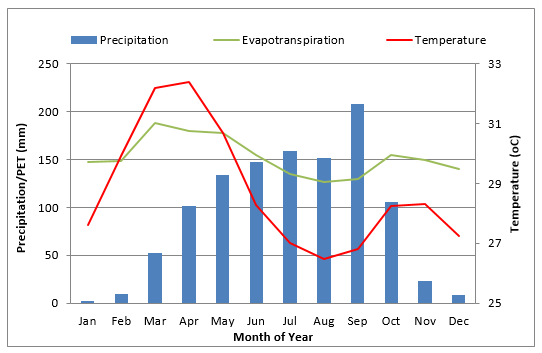
Figure 2: Long-term mean rainfall, PET and temperature at Bolgatanga (UER)
3. Topography and Drainage
The UER generally has a flat and gently rolling terrain with slopes ranging from less than 1% to 5%. The average elevation is about 300 m above sea level. The flat terrain is occasionally broken by isolated hills. UER is drained by four main rivers namely: White and Red Voltas, Kulpawn and Yaragatanga rivers and their tributaries. About 85% falls within the White Volta Basin.
4. Vegetation and Land-use
The UER falls within two main agro-ecological zones; Sudan and Guinea Savannah. The Sudan Savannah covers mostly the north–eastern parts of the region including the Bawku Municipal, Bawku West and Pusiga Districts and the Guinea Savannah covers the rest of the region. The Sudan Savannah is characterised by short grass land interspaced with short (dwarfish) trees and shrubs. Unlike the Sudan Savannah, the Guinea Savannah has very tall grasses and short, deciduous fire-resistant trees and shrubs. The predominant tree species include Butryospernum parkii (shea plant) and Parkia Filicoedea (dawadawa plant), and the main grass species include Andropogon, Pennisetum and Heteropagon spp. The exotic trees in the region include acacia,teak and neem. The dominant land use is rainfed agriculture, particularly the cultivation of annual crops (millet, sorghum, maize, root crops, nuts, pulses, vegetables, etc.), tree crops, bush fallow and unimproved pasture.
5. Geology
UERis underlain by two main geologic formations: the Pre-Cambrian Basement Complex rocks and Paleozoic consolidated sedimentary formations.
Pre-Cambrian Basement Complex Rocksare made up of crystalline igneous and metamorphic rocks which cover about 92% of the region (Figure 3).
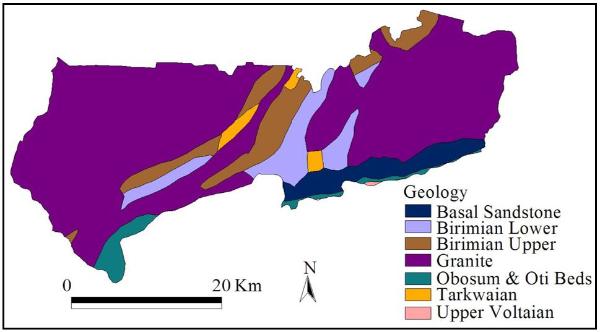
Figure 3: Map of the geology of the Upper East Region
The granitic formation underlies about 65 % of the UER. The Birimian rock formation is the second largest and covers about 25 % of the region. The Lower Birimian series consists of phyllites, schists, shales, greywacke and siltstones. The Upper Birimian consists of thick beds of agglomerates, pyroclastic and hypa-bassal intrusive rocks and rock types are mostly phyllites and greywacke. Characteristically, the pyroclastic and basic volcanics in this region have been altered and metamorphosized into hornblende schists and amphibolites and the folds in this rock formation dips in the direction of 300 – 900 in the northeast – northwest directions. The Tarkwaian rock formation underlies about 2 % of the region and is found mostly in the Bolgatanga municipal and Bongo district. This rock formation is considered to be shallow water continental origin, derived from the Birimian granitic complexes and has been subjected to low-grade metamorphism. The rock types are mainly phyllites, quartzites, schists and conglomerates.
Palaeozoic Consolidated Sedimentary Formation, locally referred to as Voltaian formation, underlies about 8 % of the region. This formation is made up of well consolidated and gently folded rocks with an average dip of about 50 and is marked by escarpment. On the basis of lithology and field relationships, the Voltaian is sub-divided into 3 sub-groups; Upper, Middle (Oti and Obosom) and Lower Voltaian (Basal sandstone). These rocks are found at the south-western and south-eastern parts of the region. The Oti and Obosom (middle Voltaian) formation has nodular structures and is intensely weathered. The rock types are sandstone, shale, arkose, mudstone beds, conglomerate and limestone. Basal sandstones underlie the south-central to south-eastern parts of the region. This rock when weathered is characteristically purple. The rock includes quartz-sandstones, sandstones and pebbly grits.
6. Soils
The predominant soil type in the region is Luvisols. Other soil types include Lithosols, Vertisols (mostly in the north – eastern corner of the region) and Cambisols. The Luvisols in the region has low nutrient content and unstable soil structure making them prone to erosion. The Lithosols have low cation exchange capacity, low aggregate stability and low organic content and fertility. The Lithosols also have shallow root depths as a result of hard pans from surface layers of plinthite, ferruginous concreation/iron pan. Thus, the resultant surface sealing causes increased runoff in parts of the region.
Generally, the soils have predominantly light textured surface horizons and vary from sandy loams to loams with very poor organic matter content. Lower soil horizons have slightly heavier textures varying from coarse sandy loams to clays. Heavier textured soils occur in many valley bottoms which are suitable for rice cultivation. Many of the soils in the region contain abundant coarse material, either gravel and stone or concretionary materials that affect their physical properties, particularly their water holding capacity.
7. Groundwater Occurrence and Characteristics
Groundwater occurrence in the UER is largely influenced by structural features (i.e. the presence or absence of faults, fractures, etc.), thickness of the overburden, the geology and the nature of the topography in the region and the degree of interconnectivity. Generally, it has been observed that aquifer systems in the upper half of the region have higher yields than the southern half of the region. This is because the upper half is underlain by granites and its subsidiary Birimian metamorphics as compared to the Voltaian mudstones and shales in the southern half of the region.
The three main aquifer zones identified are: the weathered zone, fractured zone and bedrock – weathered zone interface (zones intruded by quartz – veins and pegmatities) aquifers. The weathered zone aquifer is found within the regolith which comprises of a topsoil and highly weathered mantle or saprolite. The aquifer is characteristically phreatic or semi-confined depending on the mica and clay contents with high static water levels (1.5 m – 4.0 m below ground level). The yield of this aquifer is related to the thickness of the weathered mantle and nature of the topography. The fractured zone aquifer is the deepest of the three aquifers. It is located in the saprock and typically under semi-confined to confined conditions. Borehole characteristics show that the depths to this zone vary from 12 m – 30 m, although deeper depths have been recorded in some locations. Yields from this aquifer type are relatively high. The bedrock – weathered zone interface (quartz-veined aquifers) aquifer, which is the third major aquifer in the study region, is found in bedrocks. This aquifer type can occur as semi-confined or confined and is the most productive in the UER, with relatively high yields. Most boreholes in the region and other parts of northern Ghana tap water from this aquifer.
8. Groundwater potential
Gumma and Pavelic (2012) mapped groundwater potential zones in Ghana using remote sensing and geographic information system tools and validated with data on yields of boreholes. Groundwater potential was mapped as a function of geomorphology, geology, slope, drainage density, rainfall, land use/land cover, and soil. The study revealed that, most areas in the UER have good groundwater potential (typical well yield 5.5 m3/h) particularly in the eastern (Bawku East and West, and Garu-Tempane districts and Bawku municipality) and central (Bongo and Kassena – Nankana East districts, and Bolgatanga Municipality) areas of the UER (Figure 4).

Figure 4: Map of groundwater potential zones of Ghana (source: Gumma and Pavelic, 2012)
9. Shallow Groundwater Irrigation
Three main irrigation categories are recognized in Ghana: formal, informal (small-scale) and commercial irrigation systems. The informal irrigation systems are characterized by individuals or farming households who cultivate an area typically 0.5 ha or less by using simple technology for water storage, conveyance and distribution. The small-scale irrigators do not depend on public infrastructure for their water supply needs but, mainly depend on surface water sources (streams, rivers, reservoirs, dug-outs, etc.) and groundwater sources (mostly shallow wells or dug-outs, etc.).
Shallow groundwater irrigation practised in the UER is considered to be an informal irrigation. This is done in low-lying areas such as flood plains, alluvial channels and valley bottoms where the water table is high and as such, can easily be manually tapped using simple tools such as pick-axe, shovel, hoe, etc. Farmers identify suitable areas for irrigation based on indigenous knowledge and experience. Shallow groundwater irrigation (SGI) is predominant in most parts of the region, with the highest per capita groundwater use due mainly to the fast expansion of SGI activities (Barry and Forkuor, 2010).
SGI systems in the region can be further categorized into two groups namely; seasonal (riverine) and permanent shallow well systems. The seasonal shallow wells are mostly used in areas with high water table and typically along river banks, in low-lying areas and in river-beds. The seasonal shallow wells are usually used during the dry season for vegetable farming and refilled at the end of the dry season since, the irrigated areas are cultivated with staple crops (mostly cereals and pulses) during the wet season (main growing season). Occasionally, the river banks are flooded and as such the areas are abandoned. The Shallow wells are unlined and depths range from 1 to 5m depending on the level of the water table and, the technology used for lifting water (Namara et al., 2011).
The means by which water is abstracted and distributed from these shallow (both seasonal and permanent) wells and dugouts includes the use of rope and bucket, rope pump with bucket, and motorized pumps (Adoeti et al., 2007; Dittoh and Awuni, 2012). It is more common to find the use of bucket and rope than the use of motorized pump because the former requires low investment while the costs of operation and maintenance of motorized pump is relatively high (Dittoh et al., 2013). Motorized pumps are used especially for wells sunk on the river beds and, field watering is done manually mainly using buckets by pouring water on the field crops or using water hose. Namara et al. (2011) found that, the number of wells to be constructed per unit of cultivated area depends on the depth and availability of water, the planned size of irrigated area, the type of technology involved in lifting and distributing water, and the seepage rates from the surrounding grounds into the well.
Crops grown by SGI farmers in the dry season (November to March) differ from district to district. However, most farmers grow vegetables (Obuobie, et al., 2013; Dittoh et al., 2013) By far, the major vegetables grown by most SGI farmers are tomatoes, onions, peppers, okra, and cowpea. Other common vegetables and high-value crops include local leafy vegetables (kenaf, alefu, ayoyo, bean leaves, moringa), exotic leafy vegetables (cabbage, lettuce), garlic, ‘fresh’ maize, and sweet potato.
References
Adoeti, A., Barry, B., Namara, R., Kamara, A. &Titiati, A. (2007). Treadle pump irrigation and poverty in Ghana. Colombo, Sri Lanka. International Water Management Institute. 30p (IWMI Research Report 117).
Barry, B. & Forkuor, G. (2010). Shallow groundwater irrigation in the White Volta Basin. CPWF Project Report, Project No.: CP65.
Ditttoh, S., Awuni, J.A. & Akuriba, M.A. (2013). Small pumps and the poor: a field survey in the Upper East Region of Ghana. Water International, 38(4), 449-464.
Dittoh, S. & Awuni, J.A. (2012). Groundwater use for food security and livelihoods in the Upper East Region. Agriculture Water Management (AWM) Solutions Project. University of Development Studies.
Forkuor, G., Pavelic, P., Asare, E. & Obuobie, E. (2013). Modelling potential areas of groundwater development for agriculture in northern Ghana using GIS/RS. Hydrological Sciences Journal, 58(2), 1 – 15.
Gumma, M.K. & Pavelic, P. (2012). Mapping of groundwater potential zones across Ghana using remote sensing, geographic information systems, and spatial modelling. Environ Monit Assess. DOI 10.1007/s10661-012-2810-y.
Namara, R. E.; Awuni, J. A.; Barry, B.; Giordano, M.; Hope, L.; Owusu, E. S.; Forkuor, G. (2011). Smallholder shallow groundwater irrigation development in the upper east region of Ghana. Colombo, Sri Lanka: International Water Management Institute. 35p. (IWMI Research Report 143). doi: 10.5337/2011.214
Obuobie, E., Ofori, D., Agodzo, S.K., & Okra, C. (2013). Groundwater potential for dry season irrigation in Northern Ghana. Water International, 38(4), pp 433 – 448.

